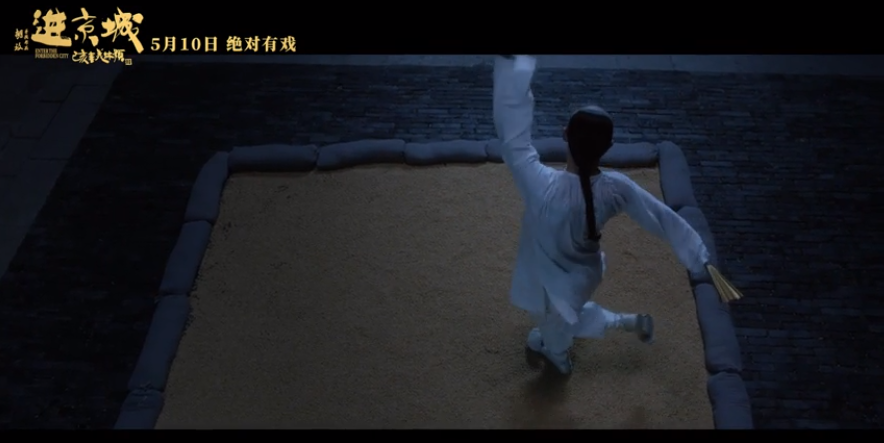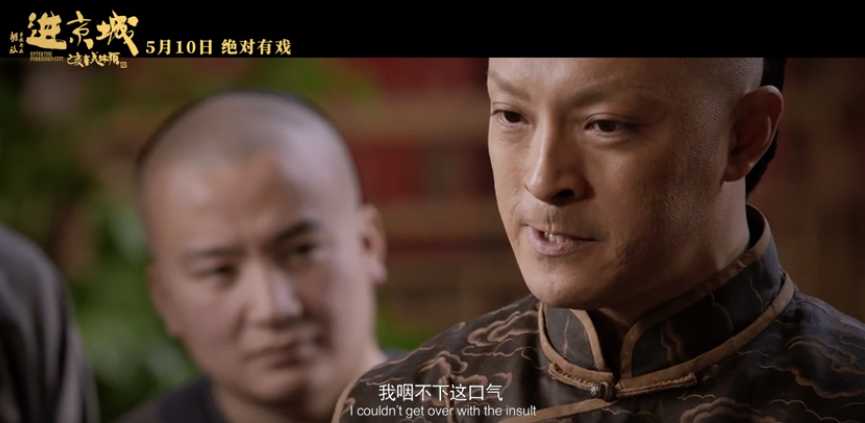People’s Daily reporter focuses on the key battle of Wuhan’s defense war.
319 new cases were confirmed in COVID-19, and 766 cases were discharged — — On February 20th, the number of newly discharged patients in Wuhan exceeded the number of newly diagnosed patients for the first time.
One reduction and one increase means that the positive trend of epidemic prevention and control is expanding.
"We must go all out to treat patients, ensure the supply of medical protective materials, and strive to improve the admission rate and cure rate, and reduce the infection rate and mortality rate. This is a prominent task in the current prevention and control work. " On February 3rd, the Standing Committee of the Political Bureau of the Communist Party of China Central Committee meeting chaired by the Supreme Leader General Secretary clearly pointed out that.
Insist on putting people’s life safety and physical health in the first place, and concentrate patients, experts, resources and treatment, which is a key battle of defending Wuhan, and advance step by step in the joint efforts of all parties to help:
— — Unswervingly implement the all-time inspection, the detection capacity of nucleic acid samples in a single day increased from more than 200 in the initial stage of the epidemic to more than 20,000, and the stock to be inspected was completely cleared, realizing the change from passive to active.
— — Unswervingly implement all accounts receivable, transform and expand designated hospitals, and increase the number of beds admitted from more than 5,000 to 23,000 within one month; Sixteen shelter hospitals have been newly built, and more than 13,000 beds are currently open, which has eased the tension of "waiting for beds".
— — Unswervingly implement the treatment, about 10% of the country’s critical care resources gathered in Wuhan, concentrated superior resources and technical strength, and raced against time to treat patients. The mortality rate dropped from 9% at the highest point on January 26 to 4.4%, and Fangcang Hospital has now achieved "zero infection, zero death and zero return".
Maintaining strength and gritting one’s teeth, Wuhan has firmly grasped the two keys of urban and rural community prevention and control and patient treatment, and worked hard in precision, meticulous and precision to continuously consolidate the results and expand the results.
"The situation of epidemic prevention and control in Wuhan is still complicated and severe." The main responsible comrades of the Wuhan Municipal Committee said that at this stage, it is more necessary to cheer up, persevere and resolutely fight the defense of Wuhan.
From stock backlog to "Nissin Daily Settlement"
Improve testing equipment and expand testing institutions to ensure that all inspections should be completed.
Put on airtight protective clothing, enter the biosafety level II laboratory, sit in front of the negative pressure biosafety cabinet, and take a long pipette to continuously extract nucleic acid from throat swab samples. After the lysate is fully cracked, put it into the kit … … Hao Yingge, 22, didn’t expect her senior winter vacation to be so unusual.
Hao Yingge studied in Sanquan College of Xinxiang Medical College, Henan Province, majoring in medical laboratory, and was an intern of Wuhan Huada Medical Laboratory Co., Ltd. On January 22nd, I heard that the company had undertaken some nucleic acid testing in Covid-19, and there was a shortage of staff. She voluntarily returned her ticket home and joined the first-line inspection team.
"At the beginning, we all extracted nucleic acids manually. It takes one and a half hours for each person to make a round of 24 samples." Hao Yingge said that after a shift of six hours, he was already soaked and too tired to lift his hands.
Covid-19 nucleic acid detection is an important basis for clinical diagnosis, recovery and discharge of patients, and it is also the basis for judging the release of close contacts. Due to the lack of detection ability in the early stage, some suspected patients are difficult to be detected in time.
Why nucleic acid detection is "hard to find"? The person in charge of Wuhan Health and Health Commission explained that according to the relevant regulations, Covid-19 sample testing should be carried out in biosafety laboratories with corresponding protection levels. For suspected cases, the collected samples must be sent to the provincial CDC for nucleic acid detection in the early stage, and the detection capacity is only more than 200 copies per day. Since January 22, 10 institutions with biosafety laboratories with corresponding protection levels, such as designated hospitals and municipal centers for disease control and prevention in Wuhan, have carried out nucleic acid testing, which can detect nearly 2,000 copies every day.
"The cumulative number of samples is 109,468, and the cumulative number of tests is 102,627." On the morning of March 2, the electronic screen displayed real-time data in the lobby on the first floor of the "Fire Eye" laboratory in Donghu High-tech Zone, Wuhan. The reporter saw that on the data histogram, the "number of tests on the same day" gradually climbed from 350 on January 27 to 11,438 on February 29.
Why is the detection ability greatly improved? "The secret is that the process of extracting nucleic acid is changed from manual to automatic." Hao Yingge said, "Now ‘ Fire eye ’ In the laboratory, one instrument can extract 96 samples in one hour. After replacing labor, not only the speed is obvious, but also the safety is better. "
"With the efforts of all relevant departments, this emergency testing laboratory was built in five days." Tian Zhijian, director of the "Fire Eye" laboratory, said.
With the arrival of testing equipment from all directions, the number of medical institutions with automatic testing capability in Wuhan is increasing. On February 10th, 10 sets of automatic nucleic acid detection equipment donated by Shanghai arrived and distributed to 10 medical and health institutions such as Wuhan First Hospital and Jinyintan Hospital.
"The daily testing capacity has increased from 186 to 465." Hu Zhimin, medical laboratory technician of Wuhan First Hospital, introduced.
Not only from the improvement of testing equipment, but also from the expansion of testing institutions. According to the person in charge of Wuhan Health and Health Commission, there are 48 units that can carry out Covid-19 nucleic acid detection in the city, with an average daily detection capacity of 23,000 person-times. The period from clinical sampling to the issuance of test results in hospitals that can conduct self-testing is generally less than 24 hours.
By February 21st, Wuhan completed the screening of nucleic acid detection stocks of clinically confirmed cases, suspected cases, close contacts and fever patients. Wuhan requires that starting from the 22nd, it will be cleared on the same day, so as to realize the change from passive to active.
From "Waiting for the Bed" to "Waiting for the Bed"
Learn from the experience of Xiaotangshan, innovate the model of shelter hospital, do our best to build hospitals and add beds, and ensure that all accounts receivable are collected.
"I was worried that there was no bed at first, but fortunately I was able to be hospitalized in time." On February 15th, all five members of Mr. Wang’s family were diagnosed with COVID-19. On February 17th, he was admitted to the intensive care unit of Zhongnan Hospital of Wuhan University with his seriously ill parents, while his wife and daughter were admitted to Fangcang Hospital. At present, he and his parents are getting better, while his wife and daughter are in good condition.
In the early stage of the epidemic, with the surge in the number of patients seeking medical treatment, the beds in Wuhan medical institutions were in a hurry. "The average time from onset to hospitalization of critically ill patients was once 9.82 days, and many people changed from mild to severe while waiting." Jiao Yahui, deputy director of National Health Commission Medical Administration and Hospital Authority, said.
It is urgent to collect all the receivables! This is a clear requirement put forward by the CPC Central Committee, and it is also a serious issue before the party committees and governments at all levels in Wuhan.
Drawing lessons from the successful experience of Beijing Xiaotangshan Hospital during the fight against SARS, two hospitals, Huoshen Mountain and Raytheon Mountain, were urgently opened. Since January 25th, nearly 10,000 workers have been working seamlessly for 24 hours, and nearly 1,000 large-scale machinery, equipment and transport vehicles are racing against time. In 10 days, the Huoshenshan Hospital with a total construction area of 33,900 square meters and 1,000 beds was put into use. In less than six days, Thunder God Mountain hospital rose from the ground and set up 1,500 beds.

On March 1st, 98-year-old COVID-19 critically ill patient Hu Popo (wheelchair-bound) and her daughter took a photo with the medical staff in Thunder God Mountain hospital, Wuhan (taken by mobile phone). Xinhua News Agency (photo by Gao Xiang)
"It is better to wait for a bed than to wait for a bed." Since February 3rd, with the promotion of the Central Committee’s guiding group to Hubei, rescue forces from all sides in Wuhan and the whole country have been working overnight, and the exhibition centers, stadiums and industrial factories in three towns in Wuhan have been requisitioned and transformed into square cabin hospitals to treat patients with mild diseases who have been diagnosed.
The reporter came to Hongqiao Group Industrial Park in Jiang ‘an District and saw that 21 factories had been transformed into a shelter hospital with a capacity of 3,500 beds. In the ward, microwave ovens, air purifiers, televisions, etc. are readily available, and daily necessities such as water cups, toiletries, earplugs, eye masks, etc. are uniformly placed in the container box under each bed.
From February 3rd, Wuhan basically built a shelter hospital at the speed of one and a half days, which greatly expanded its admission capacity. Ma Xiaowei, member of the Central Steering Group to Hubei and director of the National Health and Wellness Committee, said that the construction of Fangcang Hospital is a very critical and significant measure, which has rapidly expanded medical resources, solved the problem of a large number of patients being hospitalized and prevented the epidemic from spreading at a faster speed.
At the same time, increasing designated hospitals and transforming qualified isolation points into isolation treatment points are also advancing rapidly.
"After receiving the notice to increase the ward, we vacated the largest building in the hospital, and almost all the department staff were involved in the renovation and construction of the ward." Pan Zhenyu, director of the medical department of Zhongnan Hospital of Wuhan University, said that in just two days, the hospital urgently rebuilt 1,700 isolation beds for treating critically ill patients.
On February 12, the Guanggu Hospital of Hubei Maternal and Child Health Hospital, which was originally planned to operate in May this year, received a notice of transformation. More than 10 units and nearly a thousand people worked at the same time, fighting for 6 days and 6 nights, adding more than 700 beds.
As of 24: 00 on March 1st, hospitals in Wuhan (designated, expanded and others) had 26,855 beds available and 19,854 beds had been used. Shelter hospital can use 13467 beds, and 5236 beds have been used; 10599 beds can be used in isolation treatment points, and 3571 beds have been used; The isolation observation point can use 44185 beds, and 21149 beds have been used.
Fangcang Hospital "Zero Infection, Zero Death, Zero Turn Back"
Adhere to the combination of traditional Chinese and western medicine, move forward, and implement medical intervention as soon as possible, so that patients can be cured in the mild stage as much as possible.
"In a few days, we will leave the cabin!" At 10 o’clock on February 26th, after the nucleic acid test and CT examination, Ms. Liu in the second ward on the first floor of Wuhan Jianghan Fangcang Hospital was excited. "I can get timely treatment and monitoring from professional medical staff here. I was afraid of infecting my family at home, and my psychological pressure was particularly great."
Jianghan Shelter Hospital, located in Wuhan International Convention and Exhibition Center, has been in operation for less than 50 hours, and its software and hardware have been gradually improved. At present, there are more than 1,100 patients in the cabin, equipped with more than 200 doctors and more than 600 nurses.

This is the Fangcang Hospital of Wuhan Sports Center (photo taken on February 12th). Xinhua News Agency reporter Cheng Minshe
"The shelter hospital was first applied to the field of infectious disease prevention and control, which is a new thing." Sun Hui, president of Jianghan Fangcang Hospital and deputy secretary of the Party Committee of wuhan union hospital, said that Fangcang Hospital mainly undertakes the task of treating mild patients, moving the treatment gateway forward, and playing the role of isolating infection and early triage treatment.
As the shelter hospital with the largest number of open beds in Wuhan, as of 24: 00 on February 29th, Jianghan Shelter Hospital has treated 1830 patients, discharged 932 patients and discharged 138 patients in a single day.
On February 28th, the State Council Press Office held a press conference in Wuhan. Ma Xiaowei introduced that one out of every four COVID-19 patients in Wuhan was treated in Fangcang Hospital, which achieved "zero infection, zero death and zero turning back" and became a veritable cabin of life.
Moving forward to the treatment gate, treating patients with mild diseases in time, implementing medical intervention as early as possible, and minimizing the conversion of mild diseases into severe diseases are the necessary questions to fight the defense war in Wuhan.
"Out of the hospital! Come on! " On the morning of February 26th, Wuhan Jiangxia Fangcang Hospital, which was taken over by the national Chinese medicine medical team, handed over its first report card: 23 cured patients were discharged. There are national TCM medical teams from five provinces gathered here.
"The general direction is to strengthen the body and save the lungs." Zhu Ying, vice president of Jiangxia Fangcang Hospital and the First Affiliated Hospital of Hunan University of Traditional Chinese Medicine, said that every patient takes the decoction prepared by Academician Zhang Boli, president of Tianjin University of Traditional Chinese Medicine, in the morning and evening, and according to the symptoms of patients’ fever and dry cough, they respectively prepare granular Chinese medicine that can be taken with warm water, as well as a whole set of Chinese medicine treatments such as Ba Duan Jin dredging meridians, regulating qi and blood, and strengthening the body.
A team of Chinese medicine experts led by three academicians, Zhang Boli, Huang Luqi and Tong Xiaolin, as well as elite Chinese medicine forces from Chinese Academy of Traditional Chinese Medicine, Beijing University of Chinese Medicine and other provinces rushed to Wuhan. A team of high-level experts went to Wuhan for clinical treatment, observation and summary, and recognized diseases and treated patients from the perspective of traditional Chinese medicine. The treatment plan formed by repeated argumentation was included in the third, fourth, fifth and sixth editions of the national diagnosis and treatment plan.
"Treatment practice shows that early intervention of traditional Chinese medicine and combination of traditional Chinese and western medicine is an important method to improve the cure rate and reduce the death rate." Yu Yanhong, member of the Central Steering Group and Party Secretary of state administration of traditional chinese medicine, said.
Through early diagnosis and treatment, the proportion of severe cases has dropped from 38% at the beginning of the epidemic to about 13% at present.
High level medical team+advanced equipment
Concentrate superior resources and technical force, and strive to improve the success rate of critically ill patients.
On the afternoon of February 25th, wuhan union hospital West Hospital was in the intensive care isolation ward. Seeing that the fingertip oxygen saturation index climbed to 100% in ECG monitoring, the medical staff could not help clapping their hands. After 20 days of invasive ventilator treatment, Ms. Wang finally got rid of nasotracheal intubation.
In the past 20 days, Ms. Wang’s illness has been repeated many times. The front medical team, led by Professor Zhang Nuofu, vice president of the First Affiliated Hospital of Guangzhou Medical University, organized expert group discussions for many times, and conducted remote consultation with the academician team of Zhong Nanshan in the rear for three times, constantly improving the treatment plan.
The top hospitals in China sent the strongest force and brought excellent equipment to Wuhan, and the whole system took over the designated hospitals or wards for treating severe diseases. At present, there are 11,000 critical care professionals in the local area, which is close to 10% of the national critical care personnel resources. On this basis, a series of systems, such as academician patrol system, multidisciplinary comprehensive treatment system and holistic nursing system, have been implemented one after another.

"Timely analysis of typical cases can help medical staff quickly accumulate clinical experience and consider it more comprehensively in rescue, which is also the key to reducing the death rate." In Huoshenshan Hospital, Li Weiqin, director of the Second Department of Critical Care Medicine, will convene a critical care expert group to analyze typical cases every time after checking the room, and implement the precise treatment of "one person, one policy" for severe and critically ill patients.
On the basis of expert consultation, multidisciplinary and specialized medical teams have joined forces to continuously increase the treatment of critically ill patients.
In Guanggu Hospital of tongji hospital, Wuhan, 18 anesthesiologists from 5 hospitals are called "clients" of patients in 17 intensive care units.
"We clearly see that the number of invasive intubation is inversely related to the mortality rate." Gao Feng, director of the Anesthesiology Department of tongji hospital Optics Valley Hospital, said that severe patients in COVID-19 often suffer from multiple organ dysfunction due to lack of oxygen, so oxygen inhalation therapy is essential, and some critically ill patients need invasive intubation.
Gao Feng introduced that before tracheal intubation, it is necessary to evaluate the patient’s condition, give the patient drugs such as sedation and muscle relaxation, and then operate after the patient loses spontaneous breathing. "We only have 30 seconds to operate. If the intubation is not completed, it will be difficult for the patient to be rescued."
Every intubation operation is a life-and-death test, not only for patients but also for doctors. Because when the anesthesiologist operates close to the patient’s nose and mouth, the patient’s respiratory tract will spray a highly contagious virus aerosol.
At present, National Health Commission is organizing an expert group of anesthesiologists to screen patients who need invasive intubation in designated hospitals for severe cases, so as to move the threshold of treatment for severe cases forward and reduce the death caused by hypoxia.
Inflammation caused by Covid-19 will lead to lung, kidney, liver and myocardium damage, which is another important cause of death for patients with severe and critical illness. In the East Campus of the People’s Hospital of Wuhan University, a seven-person "blood net squad" led by head nurse Wang Yankui is fighting day and night for the treatment of critically ill patients.
"A patient has sudden inflammation and his life is in danger. Please come to the rescue as soon as possible!" On the morning of February 23, after receiving an emergency call for help, Wang Yankui immediately took the team members to change their protective clothing, trotted to the isolation ward, pre-flushed the pipeline, introduced blood into the machine, and started the thermal circulation double plasma replacement. After 3 hours, the patient’s vital signs recovered smoothly. At this time, Wang Yankui was soaked to the skin and the goggles were full of fog.
The "blood purification team" will perform bedside dialysis treatment for 13 patients at most one day. In addition to the ward notice, Wang Yankui and his colleagues also screened patients in various wards by monitoring inflammation indicators, and found that they were abnormal and took the initiative to consult with doctors in various medical teams, and formulated blood purification plans for patients who predicted possible inflammation.
Wang Gaohua, president of the People’s Hospital of Wuhan University, said that more than 3,500 local medical staff and 12 medical teams from 10 provinces and cities, including the team of Academician Li Lanjuan, have set up a number of medical treatment teams, and at the same time, they have also set up professional teams such as tracheal intubation teams to carry out multidisciplinary "one person, one policy" precise treatment for severe and critically ill patients.
Drugs with obvious curative effect and advanced instruments and equipment are given priority in the treatment of critically ill patients.
On February 25th, four ECMO (extracorporeal membrane oxygenation) equipments allocated by the state were airlifted to Wuhan. At 3 o’clock in the morning of February 26th, 300 ventilators arrived at Wuhan Tianhe Airport. On the evening of February 27th, a chartered plane loaded with 16 ECMO equipment arrived at Tianhe Airport … … The most advanced medical equipment is being continuously transported to Wuhan. The medical teams that came from all over the country also brought their own medical equipment such as ECMO and ventilator into the ward.
"Advanced equipment is the last barrier to reduce mortality." Peng Zhiyong, director of the Department of Critical Care Medicine of Zhongnan Hospital of Wuhan University, said that as of February 26th, they had used ECMO equipment to rescue 11 critically ill patients, of whom 5 were successfully rescued and 3 were being treated.
At present, the proportion of critically ill patients admitted to designated hospitals in Wuhan who turned to cure has increased from 14% to 64%. On February 28th, Ma Xiaowei said at the press conference of the State Council Office: "We are well aware that medical personnel must firmly hold the decisive battle places such as Hubei and Wuhan. ‘ Although China is big, we must never take a step back ’ Nail it here like a nail and hold the throat of the disease. " (Reporter He Guanghua Hou Linliang Cheng Yuanzhou Fan Haotian)







